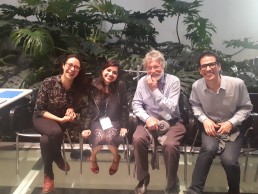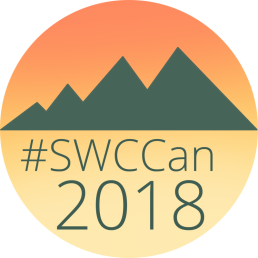Highlights from the Congreso de Revistas
On May 2, ScholCommLab director Juan Alperin flew to Mexico City to attend the annual Congreso de Revistas, a three-day long event focused on Latin American scholarly publishing. The conference, which took place at the National Autonomous University of Mexico (UNAM), brought together researchers, journal editors, students, and speakers from across the world to discuss the advancement of scientific publishing from the global south. Much of Alperin’s research is focused on this topic, including his dissertation and his book Made in Latin America (co-edited with Gustavo Fischman, and available in English, Spanish, and Portuguese). The trip, as well as his upcoming visit to the Congreso Redalyc in Peru, are part of his work to strengthen Latin American research and scholarly publishing.
Below are some brief highlights from a busy three days of talks, roundtables, workshops, and more:

Alperin (far right) sits down with Latin American DOAJ ambassador Ivonne Lujano (far left), PhD candidate Andrea Rodas Moran (centre-left), and SciELO co-founder Abel Packer (centre-right).
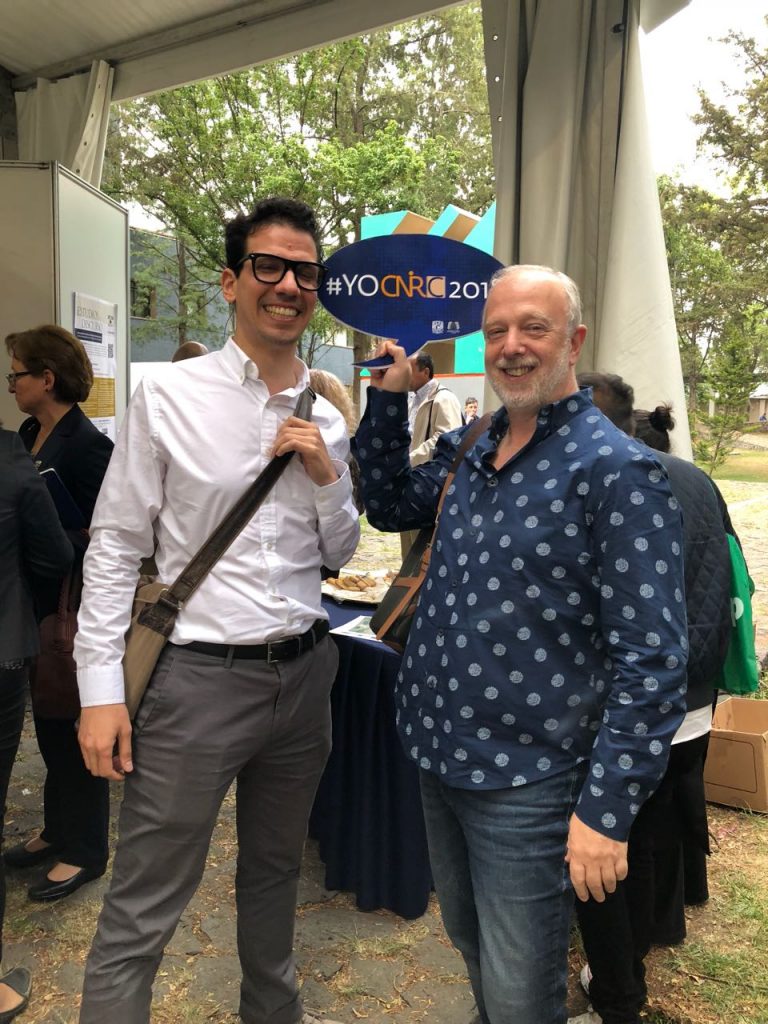
Alperin reconnects with colleague Gustavo Fischman, a professor at Arizona State University and a Research Associate with the Public Knowledge Project. They have been working together on Latin American scholarly publishing for 10 years.
To find out more about the conference, visit www.congresoderevistas.unam.mx.
Preliminary Findings from the Challenges of Capturing Engagement on Facebook for Altmetrics Study
With more than 2.2 billion active users—six times as many as Twitter—Facebook is by far the largest social media platform on the web today. Yet despite its popularity, studies investigating Facebook sharing have reported surprisingly low levels of user engagement with scholarly research on the platform. Are Facebook users really sharing fewer academic articles than Twitter users? Or is there something else going on?
In a recent study, ScholCommLabers Asura Enkhbayar and Juan Pablo Alperin set out to investigate this discrepancy by using the Facebook Graph API to search for articles that might have been overlooked by current Altmetrics engagement measures. However, before they could do so, they encountered several fundamental challenges of collecting engagement data from Facebook, some of which have never been reported before. Their findings will be presented at STI 2018, the 23rd International Conference on Science and Technology Indicators. But in the meantime, we’re sharing a sneak peek of some of the highlights, right here on the ScholCommLab blog:
1. Working with DOIs, URLs, and Facebook’s Graph API is messy.
In an ideal world, collecting engagement about scholarly articles would follow a simple pathway: 1) A document would be identified by a Digital Object Identifier (DOI); 2) Crossref would provide the most recent URL associated with that DOI; 3) the Graph API would be queried with the URL; 4a) Facebook would map this URL to their internal identifier system; and 4b) it would simultaneously return the number of its engagements.
But the reality is much more complicated. To begin with, most scholarly articles have multiple URLs associated with them, each of which needs to be identified in order to collect the full engagement data. But there’s also challenges associated with how to aggregate the metrics that are collected for each URL. In some cases, different URLs point to the same final location—making it important not to double-count those metrics. In others, however, they point to the same article at different locations, meaning the engagement data should be added together to gain a complete picture of engagement for the article. In the case of Facebook, this aggregation is done by mapping each URL to a Facebook Open Graph Object with a unique ID—a process that is not straightforward, even when care is taken to follow best practices. Together, these challenges mean that any attempt to aggregate metrics using URL-based APIs will include some errors and limitations.
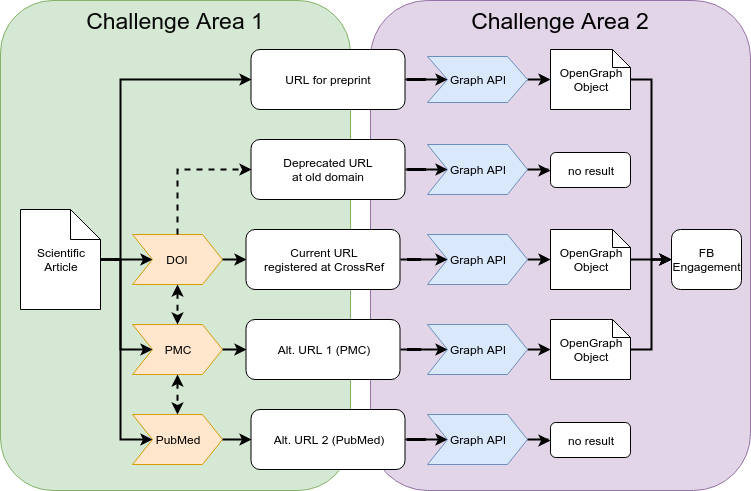
2. The difficulties of working with Facebook’s Graph API have never been documented before.
The first challenge identified in the study—that is, the messiness of working with DOIs and URLs—has been reported by several other researchers working in this area (for example, by Chamberlain, 2013; Wass, 2016; Liu & Adie, 2013). But the problems Enkhbayar and Alperin encountered when using Facebook’s Graph API have not yet been quantified in other studies. In their paper, they present an in-depth overview of these previously undocumented challenges, along with a first approximation of how pervasive the problems they generate are.
3. In 12% of cases, reliable engagement numbers could not be identified because of these challenges.
Taken together, the challenges associated with DOIs, URLs, and the Graph API make it difficult to gain a complete picture of engagement with scholarly research on Facebook. Of more than 100,000 attempts to map engagement data to a given article, Enkhbayar and Alperin identified issues in more than 12% of cases. Given that they only tested a small number of problem cases and URL variants, these results point to large challenges facing those wishing to collect Facebook metrics through the available API.
What’s next?
The present study identified some exciting opportunities to better understand the limitations of data sources and how to overcome them. But clearly, more research is needed if we ever hope to fully understand the discrepancies between actual Facebook user engagement and the numbers that are captured by the current Altmetrics system. Stay tuned: Enkhbayar and Alperin plan to investigate this fascinating question further in their next study, coming soon.
Unpacking the Social Side of Science Communication
Looking Ahead to SCW18’s “How I Scicomm” Panel
What does it mean to be a science communicator in 2018? With new apps and social platforms emerging each year, Canada’s media landscape is rapidly transforming—as is the way we share and consume research. But how are these changes affecting today’s science communicators? What challenges and opportunities do they present? And what are the implications for public engagement, community building, professional support, and ethics?
On April 12, a diverse panel of science communicators will explore these questions and more at an event called “How I Scicomm: Mapping the new frontiers of science communication in Canada”. Organized by the Scholarly Communication Lab’s own Germana Barata, the event is part of this year’s Science Writers and Communicators of Canada’s Annual Conference and will be moderated by SWCC President Tim Lougheed.
To find out more about this exciting event, we interviewed three of the panelists: Instagrammer and biologist Samantha “@science.sam” Yammine, science YouTuber Kurtis Baute, and science communication researcher Germana Barata.
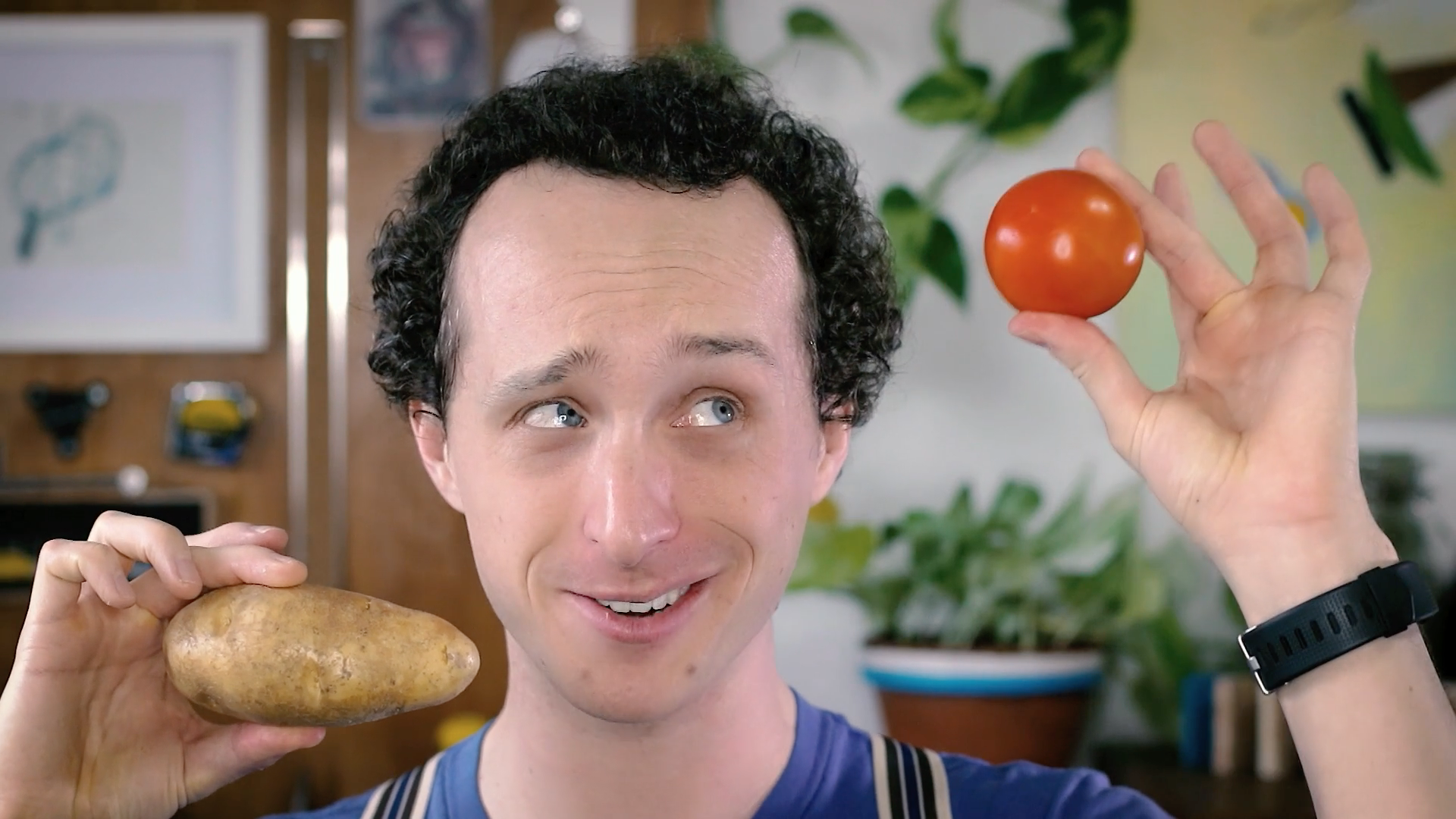
ScholCommLab: What does good science communication mean to you?
Kurtis Baute: The key thing to me is that it needs to be engaging. Maybe it tells a story, maybe its a spectacle, or maybe it’s a sort of puzzle—but no matter what, it has a thoughtful way of keeping people interested until the end.
Samantha Yammine: To me, quality science communication should strive to be as inclusive, respectful, and accurate as possible. In an ideal world it would also be a lot more discussion-based.
Germana Barata: Science communication is a powerful tool to inform, engage, and empower the public to make better decisions about topics related to science and technology. This can include everything from health and food consumption issues to questions about privacy and the environment. My main concern as a science communicator has been to provide open access to information, mainly through social media.
SCL: Has that changed since you first started working in science? How?
KB: Definitely. Some of my first science videos were simply me explaining a science concept, and when I managed to do that clearly it was useful for those who already wanted the explanation. I’ve learned that to spread science to those who might not seek it out, you’ve gotta be really engaging.
SY: While I've always had the curiosity, patience, and privilege to learn about science, I didn't always have the access so my passion for inclusion hasn't changed. I do think that I've only really started appreciating just how exclusive science communication can be until more recent years. Further, I didn't appreciate the importance of relatable communicators until I saw other industries have success with this more personable approach to sharing information.
GB: The main changes I’ve noticed recently are all related to social media as a channel of public participation. It has impacted scholarly communication in many ways, forcing universities and researchers to communicate more openly and frequently with the general public. Scientific journals have changed their centennial way of communicating to peers by releasing papers on socially relevant topics like public health as soon as they have received them—even before peer review process. Finally, the paper evaluation and publication system has sped up, allowing information to be shared faster and enriching the knowledge building process.

SCL: What is the biggest challenge you face as a science communicator today?
KB: Its hard for science videos to compete with videos of, say, a guy sneaking hot-dogs into strangers’ pockets. Social media has tailored itself to human psychology, and most people just want to be entertained. I’ve made it my mission to be entertaining while sneaking in science messages. Sort of like hot dogs in pockets.
SY: Acceptance. While I've received a ton of verbal support I'm grateful for, it's still unfortunately difficult to be taken seriously in an academic environment communicating through social media. On the high level people are very understanding, but in the moment when I need to walk through the lab or crowd of scientists taking a selfie video it can get awkward.
GB: As researchers, it can be very hard to access data about social media, limiting our analyses and making it difficult to understand its role in the sharing of scientific information. It’s a stark contrast to how openly these social platforms share their users’ personal data with big companies.
SCL: Who or what inspires you?
KB: The scientist who’s had the biggest influence on me is Carl Sagan; his poetic perspective on the Universe opened my eyes to science. On the opposite end of that inspiration-spectrum is the band OK GO. Their music videos involve taking simple things, like treadmills, and creating a spectacle out of them.
SY: There are many fantastic Canadian science journalists and communicators who do a great job of distilling important science topics into their most fundamental parts, and telling stories that can have important societal impact. I look to them to hone my storytelling skills, and social media experts from other industries to learn more about how to make those stories resonate on social media. I've learned a ton by following a few key fashion bloggers, because that's an industry that has been largely self-made by young female entrepreneurs innovating how we communicate at scale.
GB: Currently, I’m most inspired by people who are doing great science communication work in creative and inexpensive ways, such as some of my colleagues at this roundtable. They are a tiny part of a huge community that is impacting thousands, sometimes millions of people through their efforts on social media.
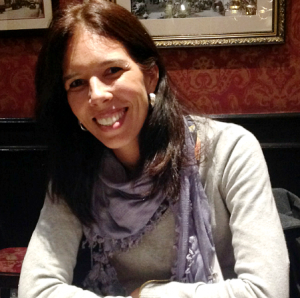
SCL: What change do you hope to see in the future?
KB: At least on YouTube, complicated and relatively obscure phenomena like “Black Holes” have way more content about them than equally interesting and more basic phenomena such as “gravity”. If we only talk about sexy science concepts like Black Holes but we don’t explain core concepts like gravity, than there is a barrier to entry that will prevent a lot of people from learning any actual science. I hope to see that change.
SY: I hope we can start emphasizing the process of science more than the fun facts, since it's the scientific method that can be more broadly useful in day to day activities. I also wish that we will find compelling ways to inspire wonder in biology without a health spin, because I think this actually does more to hurt the public's interest than it helps.
GB: I hope to see scholars, research institutions, and universities start to think about science communication as something valuable and strategic, rather than simply “cool.” Science should’t just be about talking to peers. It needs to involve a dialogue with society if we ever hope to understand the demands we need to meet.
SCL: What are you most looking forward to about the panel?
KB: I’m excited to have some discussions with other science communicators, and I’m looking forward to learning something new!
SY: I can't wait to learn from my fellow panelists and to have an opportunity to exchange philosophies and strategies in communication media that are relatively new for science!
GB: I’m hoping to better understand the challenges that come with doing science communication on social media and how associations like SWCC and ACS can empower people to communicate science with quality and beauty. We have an opportunity to fight fake news and to increase public awareness about the relevance of science, and I’m excited to see where that will take us.
“How I Scicomm: Mapping the new frontiers of science communication in Canada” will take place on Thursday, April 12 from 3:30 to 4:30 pm at the Science Theatre. For more information, visit sciencewriters.ca.

